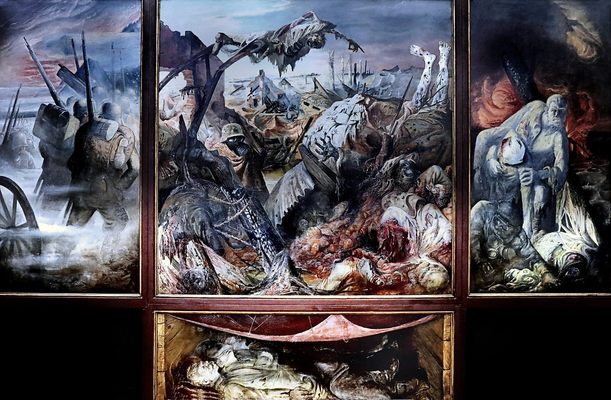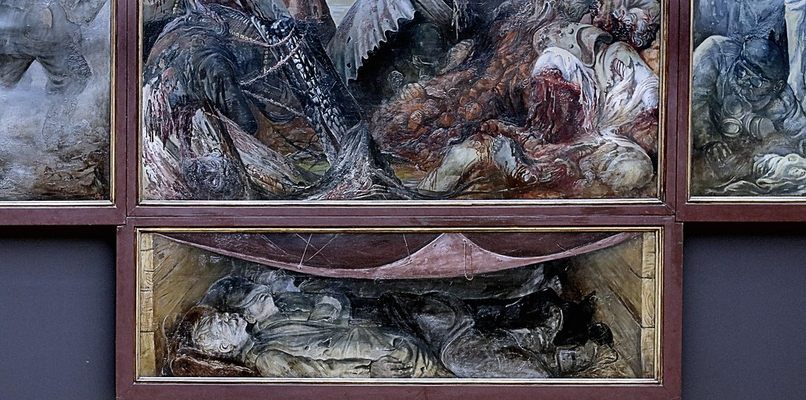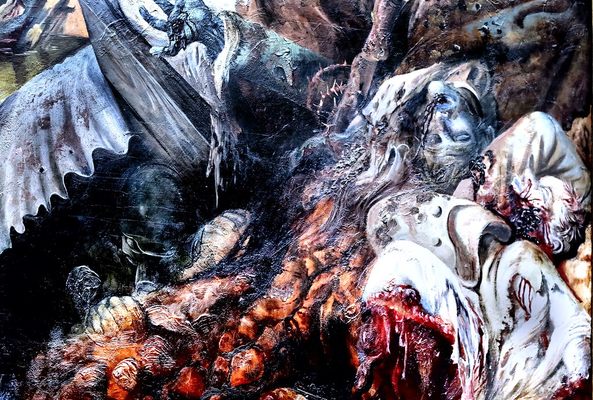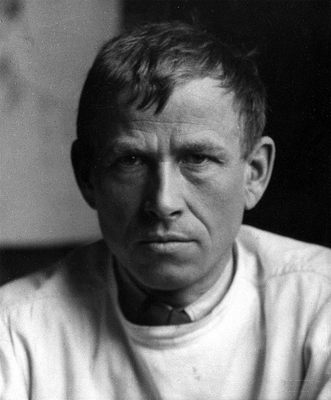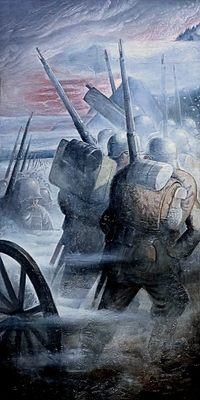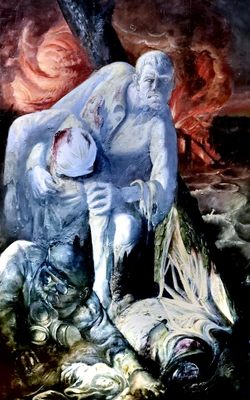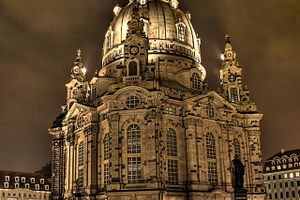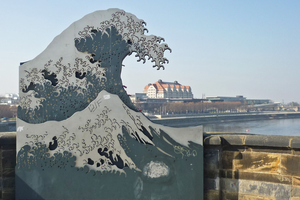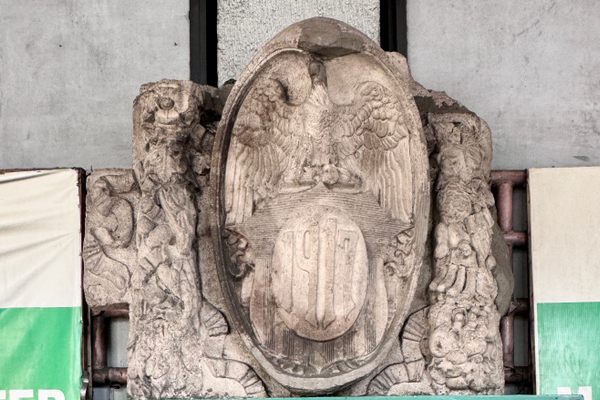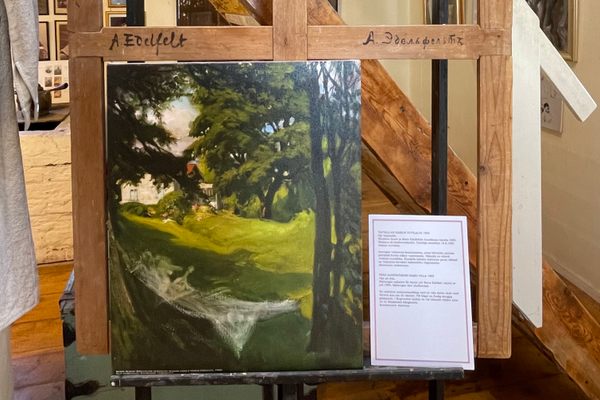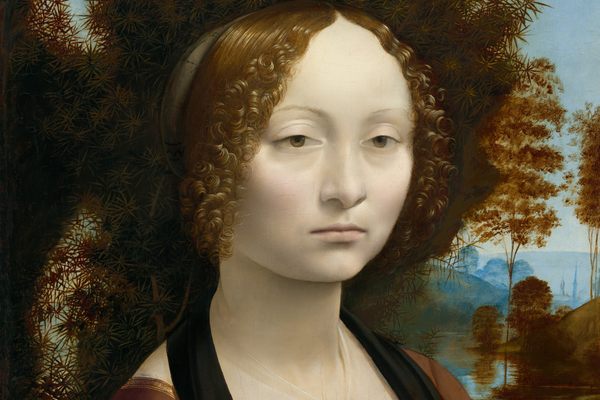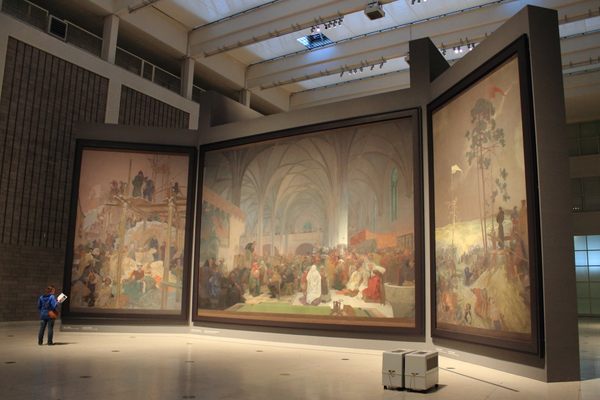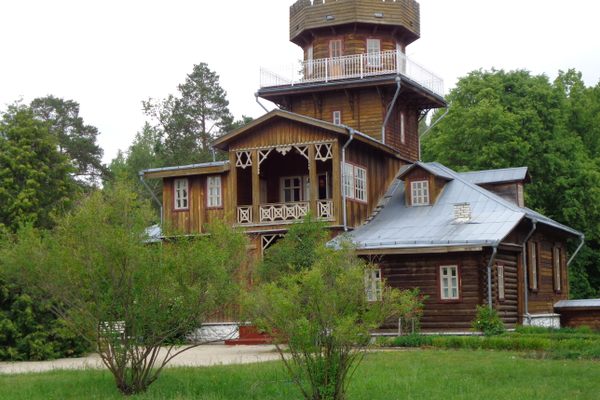About
Out of a darkened room at the Galerie Neue Meister looms an unspeakable scene that assaults the viewer with the intensity of a fever nightmare. The Dresden triptych, which measures four meters by two meters, was the product of three years of continuous work (between 1929 and 1932) by the artist Otto Dix and is widely considered to be his magnum opus.
Under a bleak sky a solitary figure, his humanity obscured by a gasmask, surveys a bomb-ravaged quagmire littered with ruins and the gore and decaying cadavers of hundreds of fallen soldiers that spill blood and entrails upon the muddy ground.
On the far left of the canvas march two battle helmeted storm troopers wielding Mauser rifles and fixed bayonets as a sinister mist or poison gas swirls and envelops them. On the far right, an anguished figure wearing pajamas drags a fallen comrade through scattered piles of corpses towards the viewer accusingly. (This figure serves as a cameo by the artist, as Dix painted a small self-potrait.)
Born in 1891 to a working-class family, a young Dix showed an interest in art from an early age. He was accepted as a student at the University of Decorative Arts in Dresden, where he studied until the outbreak of the First World War in 1914.
Dix served as a machine gunner for the duration of the war on both the Eastern and Western fronts and was to be both a witness and a participant in the horrors of industrialized warfighting in the battles of the Somme and Flanders. After the defeat of Germany, Dix returned to civilian life and continued his career in art during the turbulent years of the Weimer republic. The paintings and prints he created portrayed a toxic post-war society ruled by corruption, nihilism, and hedonism and the callousness and indifference with which veterans were treated.
Perhaps unsurprisingly, war was a central theme of Dix's art. He documented what he had witnessed both to showcase wider society the unpleasant and uncensored reality of WWI, and to exorcise the trauma and nightmares that the trenches had left deep within his mind and soul. He wrote, "All art is exorcism. I paint dreams and visions too the dreams and visions of my time."
Dix quickly became a proponent of the Neue Sachlichkeit (New Objectivity) style of art, which sought to portray the grotesque reality of society and war with a pitiless (though not moralizing) gaze. Due to this controversial and unflinching style of depicting reality and refusal to submit to ideology, Dix earned the personal enmity of Adolf Hitler.
Persecution by the Nazis was to follow through dismissal from his position as a professor at the academy of arts in Dresden and the confiscation and burning of many of Dix's paintings and prints, which had been labeled as "degenerate." The triptych thankfully managed to survive this dark period by being separated into three pieces which were each hidden away by Dix and his friends in different secret locations where they would not be uncovered by the Nazis and burned.
Related Tags
Know Before You Go
The Der Krieg War triptych can be seen at the Galerie Neue Meister museum in the centre of Dresden city.
The museum is open from 10 am to 5 pm from Tuesday to Sunday and entrance to the museum costs € 12 Euro.
Published
November 22, 2021
